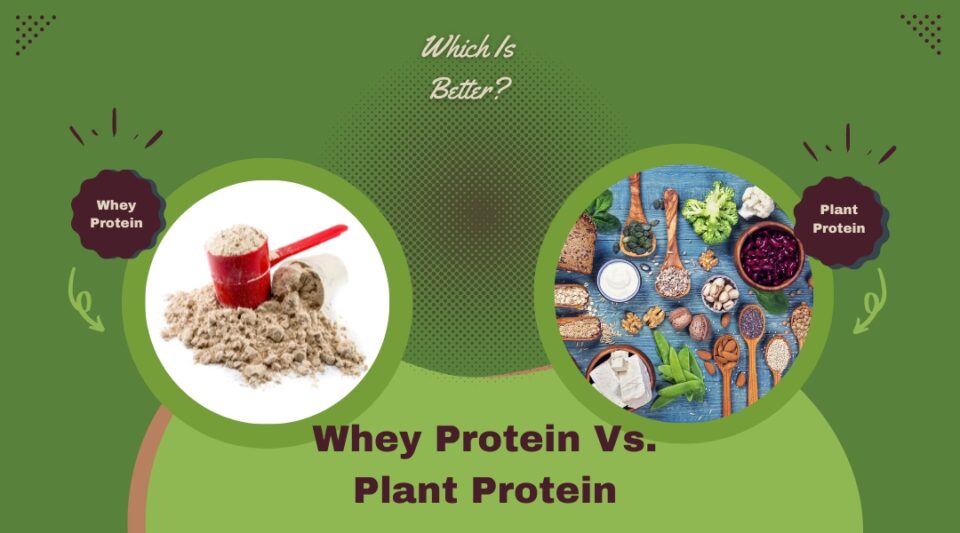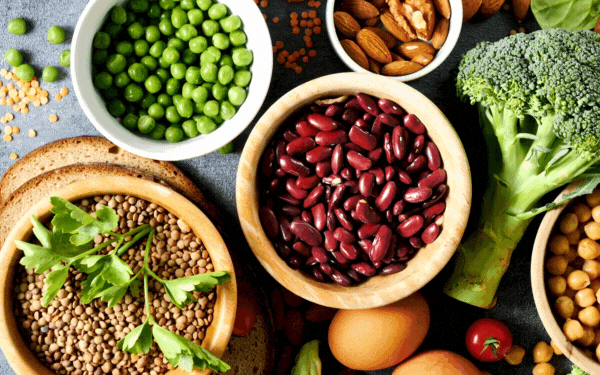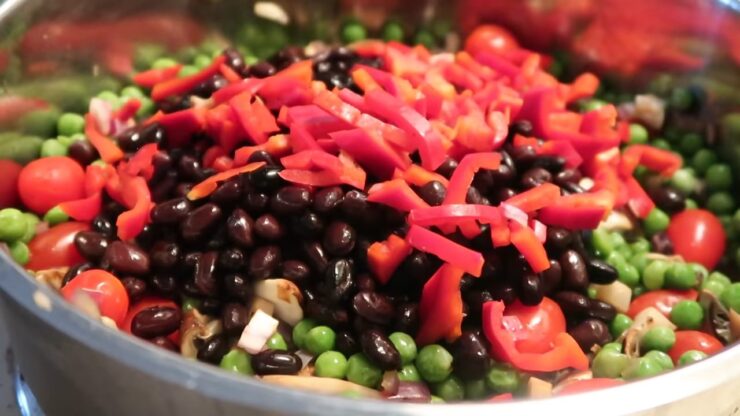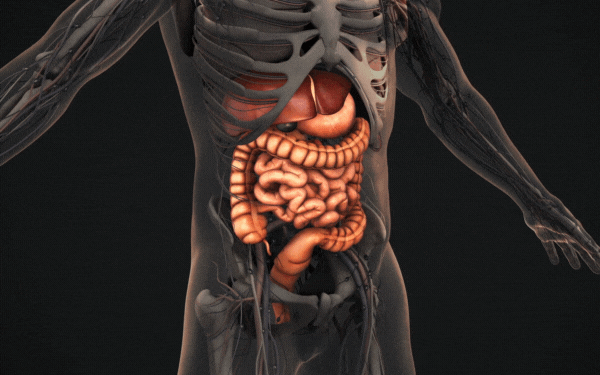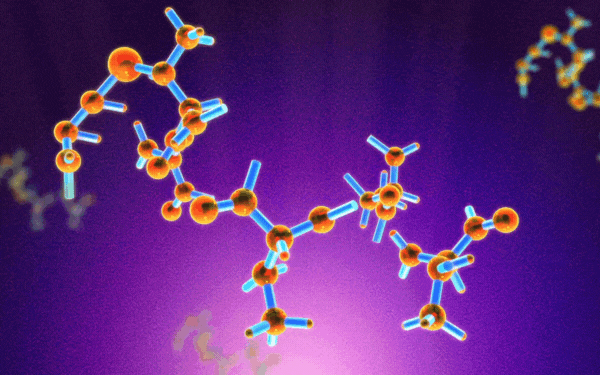If you’re interested in starting to include protein powders into your routine but you aren’t sure where to begin, you came to the right place. We’re here to break down two of the most common proteins and explain everything about them. That includes what they are, how they’re made, what you can accomplish when consuming them, and so much more!
Protein powders are most commonly employed as a post-workout recovery supplement, preferably consumed within 30-60 minutes after completing weight training or an endurance workout. This promotes muscle repair and protein production.
Although this is the most common reason for consuming protein powders, it is not the only one. Keep on reading to find out what whey and plant protein is and which one of them you should take based on your personal needs and preferences.
Contents
Whey Protein – Explained
Whey protein is the protein derived from whey, the watery component of milk that separates from the curds during the cheesemaking process. It’s popular as a protein supplement. It may boost the nutritious content of the diet while also influencing the immune system.
This protein is often used to improve sports performance and strength. It is also claimed to treat asthma, diabetes, weight reduction, and a variety of other ailments, although there is no scientific evidence to back up the majority of these claims.
Whey protein is frequently promoted as a nutritional supplement, usually in powder form for mixing into drinks. It’s also often used as a thickening in many varieties of yogurt to improve texture and reduce syneresis. Yogurt with a high protein content has become more frequent on store shelves as Greek yogurt has grown in popularity.
Plant Protein – Explained
Plant protein is essentially a useful protein supply derived from plants. This category includes pulses, tofu, soya, tempeh, seitan, nuts, seeds, some cereals, and even peas. Pulses are a diverse collection of plants that include chickpeas, lentils, beans (including black, kidney, and adzuki beans), and split peas.
Plant proteins are extremely nutritious, not just as protein sources, but also as sources of fiber, vitamins, and minerals. Our fiber consumption is often inadequate; but, by introducing certain plant proteins into your diet, such as pulses, peas, and nuts, you may easily increase your fiber intake. Plant fiber is abundant in peas, soya beans, and green beans.
Meat is not the sole source of protein, and people who avoid it, like vegetarians, can easily replace it with plant proteins. It takes forethought since not all plant proteins provide the full range of amino acids and vitamins required by the body, but it can be accomplished.
For men and women over the age of 19, the current recommended dietary allowance is 0.8 grams of protein for every kilogram of weight. Nevertheless, protein requirements vary according to age, exercise intensity, and body composition.
According to new studies, women may require extra protein at different stages of their lives. You may fulfill these daily needs by eating 25 to 30 grams of protein at breakfast, lunch, and dinner, as well as a protein-rich snack.
Whey Protein Vs. Plant Protein – Key Differences
There are several distinctions between whey protein and plant protein. For example, regardless of the form, whey protein’s capacity to be absorbed and utilized by the body, commonly known as bioavailability, is quite high. Plant protein bioavailability, on the other hand, differs from plant to plant.
In terms of muscle growth, both plant-based protein and whey protein are beneficial. Choosing which one of them is the best, especially considering how money protein powder products are currently on the market, can be quite difficult. That is why it is critical to do some research before making your final decision.
Luckily, you don’t have to waste time looking for answers anymore because we’re here to deliver them! Take a look at the list below to find out what the key differences between these two proteins are and choose the one that fits your needs perfectly:
1. The Way They’re Produced
Whey is the liquid portion of milk that separates during the cheese-making process. For many years, this by-product was deemed waste until bodybuilders and dairy marketers discovered it was high in protein and very inexpensive. When the whey is separated, it is boiled, microfiltered, pasteurized and dried. Next, sugars and preservatives are included to produce what we know as protein powder.
Plant-based protein sources, on the contrary, require little to no processing. Certain foods, such as oats, almonds, and beans, simply grow with vital amino acids incorporated. Others, such as nut butter and tofu, require some processing, but not nearly as much as it takes to make a bottle of whey protein powder.
A powder may be manufactured from a single plant or a variety of plants, depending on the brand. Plant-based protein powders do not include dairy or lactose because they are manufactured completely of plants, making them an excellent choice if you pursue a vegan lifestyle or are lactose intolerant.
2. Protein Content
Whey and plant-based protein powders typically include comparable levels of protein, and the average product containing is 20-30 grams per serving. Since it includes all nine necessary amino acids, which are the basic components of protein, whey protein powder is also called a complete protein. It contains branched-chain amino acids (BCAAs) including leucine, isoleucine, and valine, which are vital for muscle growth as well.
The protein composition of plant-based protein powder varies depending on the plant from which it is derived. Plant-based powders have fewer BCAAs than whey powders. Also, soy protein powder is the only one regarded as complete.
Several manufacturers conveniently blend different plant proteins in their goods to guarantee that they include all required amino acids and BCAAs. Reading the nutrition label is the best method to determine whether a protein powder includes a sufficient quantity of protein and an ideal combination of amino acids.
3. Nutrient Density
The quantity of nutrients available per calorie is referred to as nutritional density. Fruits, vegetables, whole grains, and legumes are examples of nutrient-dense foods. Nutrient-deficient foods, on the other hand, have few nutrients and frequently a lot of calories.
Endurance athletes must consume nutrient-dense diets to sustain maximum health. Although it is high in protein, whey powder is deficient in other nutrients. Plant-based sources, on the contrary hand, provide all of your protein needs while also delivering extra nutritional advantages.
4. Digestibility
Lactose, a frequent dietary intolerance, is present in whey protein powder. Although whey protein isolate has less lactose per serving, it may still cause stomach distress, bloating, and gas if you are lactose intolerant.
Plant-based protein powders are made up of a variety of components. Some include the common allergens soy and gluten, so check labels carefully and choose goods labeled as soy-free and/or gluten-free if necessary. If you have irritable bowel syndrome or are sensitive to FODMAPs, some plant-based protein powders, particularly those containing pea protein, might induce bloating and cramping.
If you suffer from food sensitivities, an excellent approach to determine which protein powder is best for you is to sample a variety and keep a diet and health journal. This might assist you in identifying and tracking any negative effects that may occur as a result of utilizing various products.
5. Cost
Plant-based and whey protein powder costs vary greatly depending on the brand. In general, both types have a comparable price. Nonetheless, items labeled as organic, keto, or paleo, or those that have other particular attributes, tend to be more expensive.
Keep in mind that certain plant-based protein powders, such as hemp, have bigger serving sizes than others, such as peas. As a result, you’ll consume more powder in less time, thereby increasing the entire cost. Choose a plant-based option with a similar serving size to whey products if you want to save money.
If you’re curious about whether one of these two proteins can help you lose weight, continue reading. Although studies on plant-based proteins and weight reduction are limited, we do know that plant-based diets are associated with lower weights.
We also know that individuals who weigh less frequently consume more plant proteins and fewer animal proteins than those who weigh more.
Conclusion
Still indecisive when it comes to whey and plant-based protein? Everything comes down to personal taste, which includes dietary preferences and sensitivities. Whatever you choose, always read the label. Many protein powders, both whey and plant-based, contain artificial sweeteners, thickeners, flavors, and colors.
Avoid those that include a lot of chemicals, and keep in mind that, while protein powders can help you receive more protein throughout the day, whole meals can still provide more protein.

